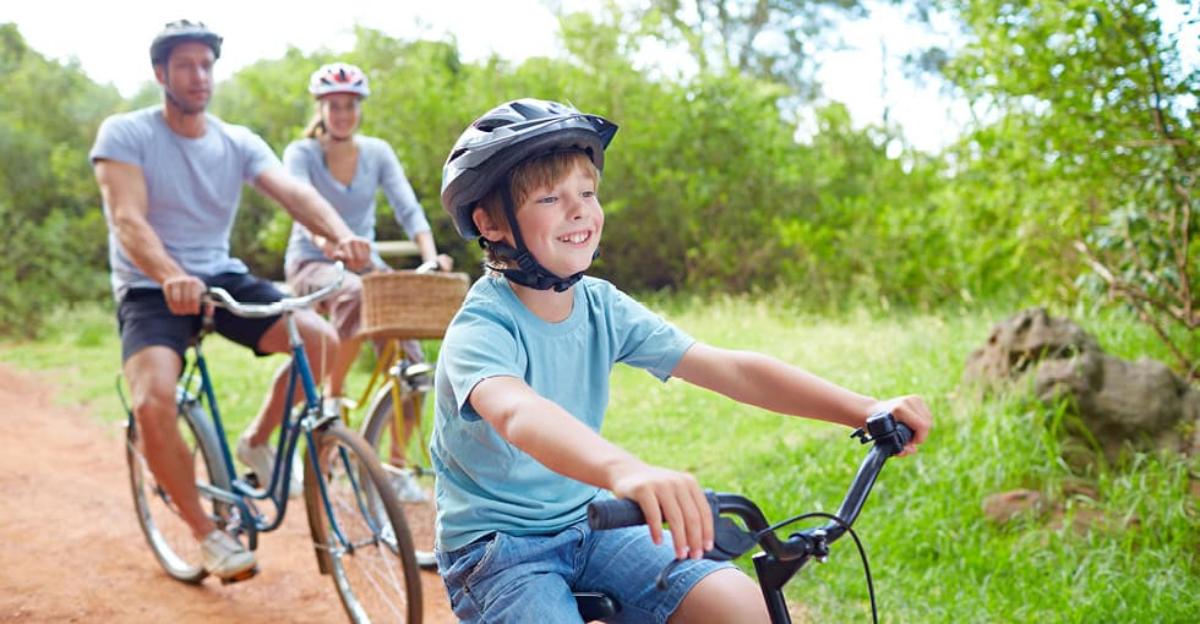It’s finally summer break! Your kids have been working hard all school year long and now they get to sleep in and veg out all day, right? Of course not! Having so much free time over the summer is a nice break from the constant go, go, go schedule that often occurs during the school year, but it’s also important to see summer as an opportunity to be more physically active. All that hard-earned fitness during the year needs to be maintained, so the recommendation for 60 minutes or more of daily physical activity for children is not just for during the school year. It’s for ALL year!
While there may not be recess or PE time scheduled into their days, make sure children still get outside and get active doing something they enjoy. This will help them stay healthy and maintain their fitness throughout the year. Here are some tips for making that happen:
Be Supportive
If you need to be at work and your kids are too young to be at home unsupervised, summer camps that promote physical activity are a great way to keep children active over the summer.
If at least one parent can be at home with the kids, offer to support them by:
- Allowing your children to get together with friends to make physical activity more fun.
- Providing toys that encourage their activity, like a jump rope, bicycle, balls, flying discs, etc.
- Providing transportation to and from physical activity venues when you can.
- Engaging in physical activity with your children. This not only makes it more fun for them, but it also gets you active as well!
- Doing anything you can! Studies show children who feel supported are more likely to be physically active.
Plan Ahead
If your goal is to be active for at least 60 minutes daily, you must schedule time for that. If you don’t, the day fills up with your errands and household chores, and kids settle in for hours of sedentary activities like watching TV or playing video games. Remember that you don’t need to be active for 60 minutes in one bout. In order to break it up, you could plan something in the morning and something in the evening when it’s cooler.
To mix it up and keep it fresh, try rotating activities each day. Plan each week with your children so everyone gets a say in what you all do. When children are part of the decision-making, there’s more buy-in. Here’s a sample of a weekly plan with input from the whole family:
Monday: Take a dog walk in the a.m. and play basketball in the p.m.
Tuesday: Take a bike ride in the a.m. and a hike in the p.m.
Wednesday: Play catch in the a.m. and take a dog walk in the p.m.
Thursday: Go to the playground in the a.m. and swim at the beach or pool in the p.m.
Friday: Take a walk in the a.m. and kick a soccer ball around in the p.m.
Saturday: Go to the beach, a lake, or a park, and bring lots of toys for activity!
Sunday: Go for a hike
Note: If you don’t have a dog, check with local animal shelters to see if they need volunteer help to walk their animals.
Everything may not go as planned but do the best you can to keep physical activity a top priority each day. You’ll be giving your kids a better chance to reach their 60-minute goal!
Set Limits
Limit your children’s (and the whole family’s) screen time. The number of minutes is up to you, but the American Academy of Pediatrics recommends a limit of 1-2 hours daily. This includes all types of screens, including TV, movies, phones, tablets, computers, etc. Kids who are in front of screens more than 2 hours a day have a higher risk of being overweight and may have irregular sleep patterns.
Keeping TV, phones, tablets, and computers out of your child’s room is a big help. Those with them in their room spend an extra 90 minutes watching them than children without.
When children watch TV, set a rule that there is no sitting during commercials. It helps to break up their screen time and limit the consecutive minutes seated. Try throwing some quick exercise bursts!
Have Fun!
Keeping your activities fun is a great way to ensure your children will be active now as well as in the future. You want them to associate activity with enjoyment. Getting their input is important, but also be sure to expose them to a variety of activities. This allows them to get a little taste of everything and find which ones they enjoy the most. Here is a list of some fun ways to be active:
- Play volleyball with a beach ball or volleyball in the backyard or park.
- Challenge the kids to a create-your-own obstacle course at the playground.
- Take a family walk and prompt your kids to balance walk the curb and short walls as you go along.
- Shoot baskets with an age-appropriate ball and basket.
- Play a tag game at the park.
- Take a nature walk at a park or preserve.
- Play create-your-own golf using flying discs or soccer balls at your local park.
- Take a family bike ride.
- Have a nature scavenger hunt looking for things like feathers, rocks, seeds, leaves, etc.
- Jump rope; either short or long ropes depending on everyone’s skill level.
Whatever you decide to do this summer, keep it fun and active. Your children will have a healthier, happier summer!
Read More: How to Create a Before-School Fitness and Running Club






Leave a Reply